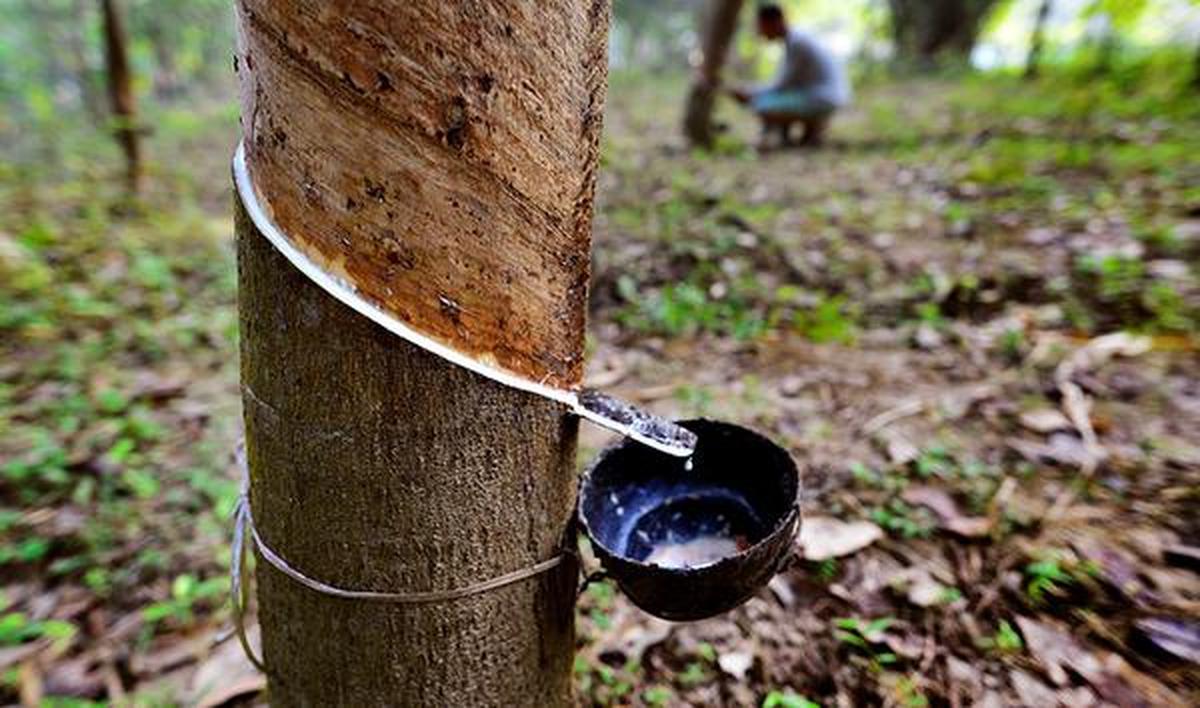Context
Kerala, India’s leading rubber-producing state, is currently facing a serious threat to its plantations. A new study has identified a damaging alliance between the ambrosia beetle (Euplatypus parallelus) and certain Fusarium fungi, which is causing severe harm to rubber trees. This development is of particular concern as India is the sixth-largest producer of natural rubber in the world, and Kerala alone contributes around 90% of national production.
The Beetle-Fungus Attack:
The ambrosia beetle does not feed on wood directly. Instead, it bores tunnels—called galleries—into the bark and introduces symbiotic fungi. These fungi:
· Decompose the wood and extract nutrients.
· Serve as the primary food source for beetle larvae.
· Weaken the wood by releasing enzymes.
· Block water transport in the tree’s xylem, leading to internal decay.
The presence of F. solani in adult beetles is being reported for the first time. Once established, the infection leads to:
· Severe leaf fall
· Trunk drying and cracking
· Reduced latex yield
· Long recovery time
· Death of the tree in severe cases
Spread and Risk:
Although native to Central and South America, the ambrosia beetle was first detected in India in Goa in 2012. Being a flying insect, it can easily spread to other plantations. It is known to attack:
· Cashew, coffee, coconut, and teak
· Stressed or wounded trees, especially those emitting ethanol
The fungi, especially Fusarium species, are virulent pathogens. They can be carried by insects or persist in soil and plant tissue. Deep fungal infections are hard to treat because:
· Fungicides and insecticides fail to reach the infected core
· Once systemic, infections are often irreversible
Moreover, some Fusarium species can infect humans with low immunity, making this a plantation health concern for workers.
Rubber Industry in India:
India is the third-largest producer and fourth-largest consumer of natural rubber in the world. The country’s rubber production is largely concentrated in the southern state of Kerala, which alone accounts for over 90% of the total output.
· In addition to Kerala, rubber is also cultivated in Tamil Nadu, Karnataka, Tripura, Assam, and Meghalaya.
· Despite its global ranking, the Indian rubber sector faces several key challenges. Around 20–25% of plantations remain untapped, mainly due to labour shortages and declining profitability.
· The sector also suffers from irregular rainfall patterns, increased climatic stress, and growing pressure to comply with new environmental regulations such as the European Union Deforestation Regulation (EUDR), which may impact future trade prospects.
About the Rubber Crop:
The rubber tree, scientifically known as Hevea brasiliensis, is native to the Amazon basin. It was introduced to India by the British during the colonial period.
· Rubber is obtained from the tree in the form of latex, which is tapped from its bark. Rubber trees require specific climatic and soil conditions to grow well.
· They thrive in a tropical climate with annual rainfall between 200 and 300 cm, and temperatures ranging from 25°C to 34°C with around 80% relative humidity.
· The ideal soil for rubber cultivation is deep, fertile lateritic soil, typically low in phosphorus.
Conclusion:
The ambrosia beetle-fungus alliance is a serious challenge to India’s rubber sector. Given Kerala’s key role in rubber production, urgent action is needed to prevent the spread of this threat. Sustainable, locally-adapted control measures and early detection systems will be critical in protecting plantations, farmers, and the wider rural economy.







